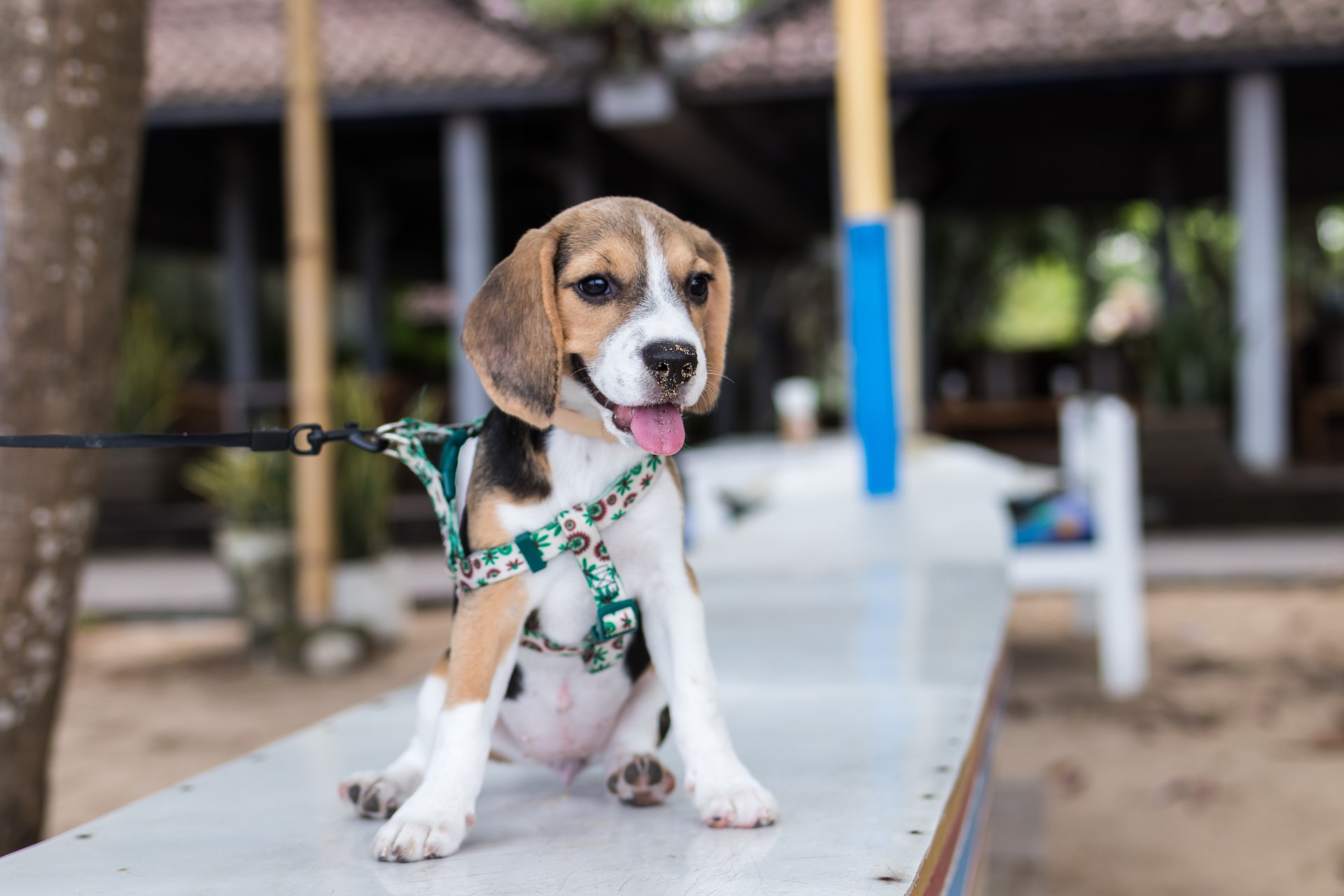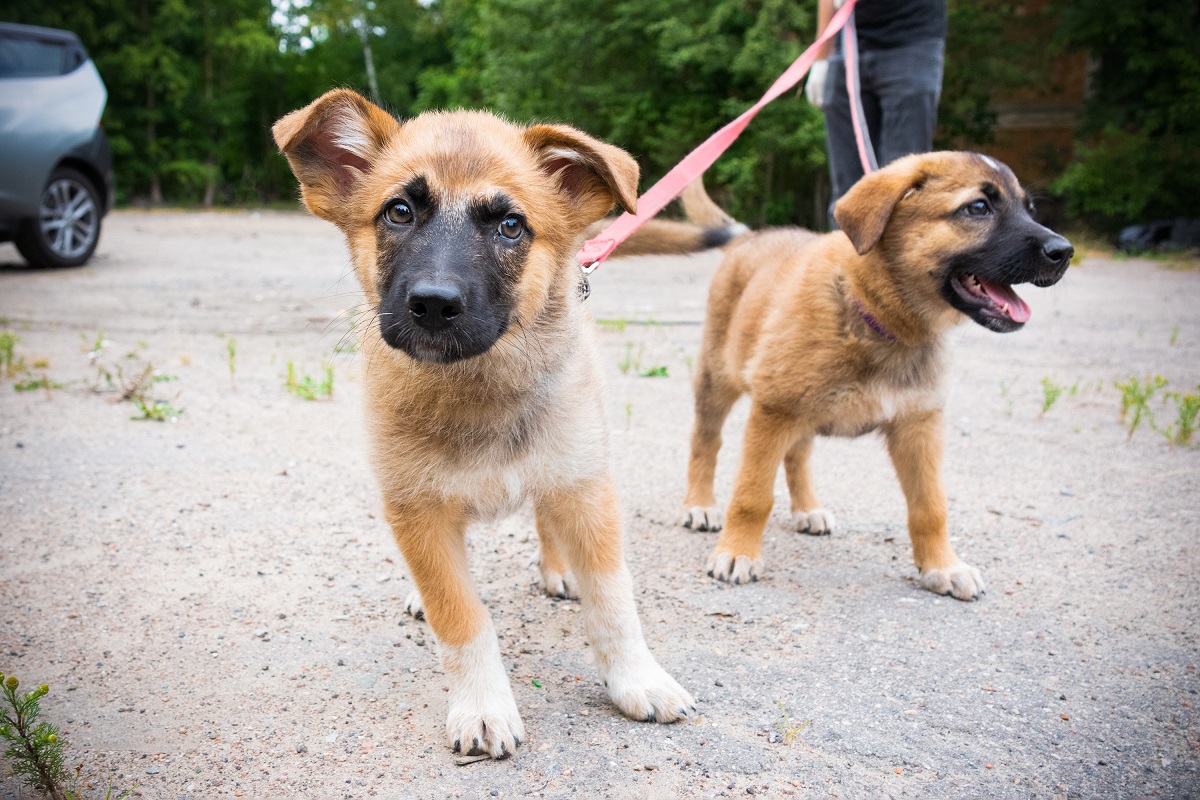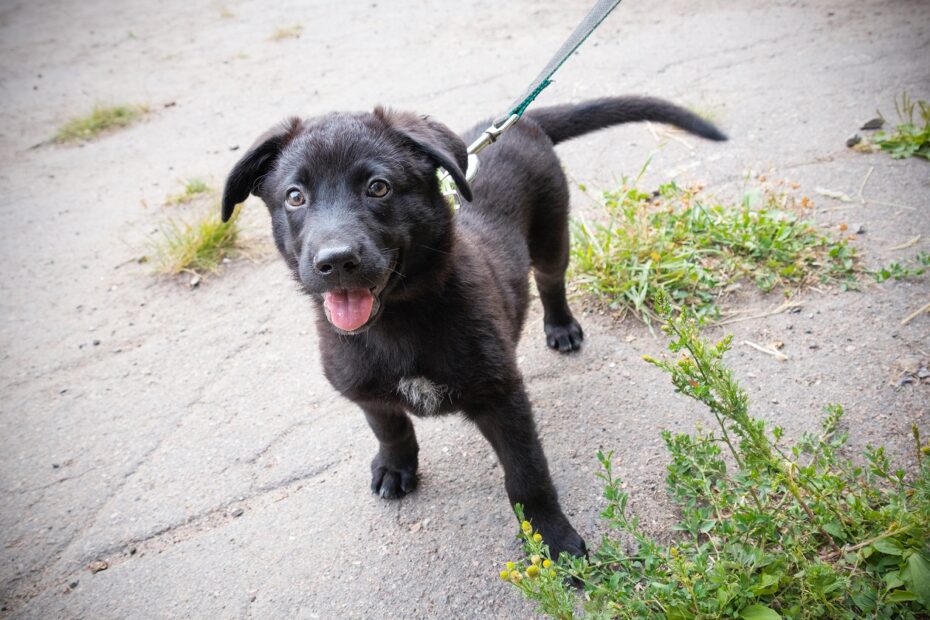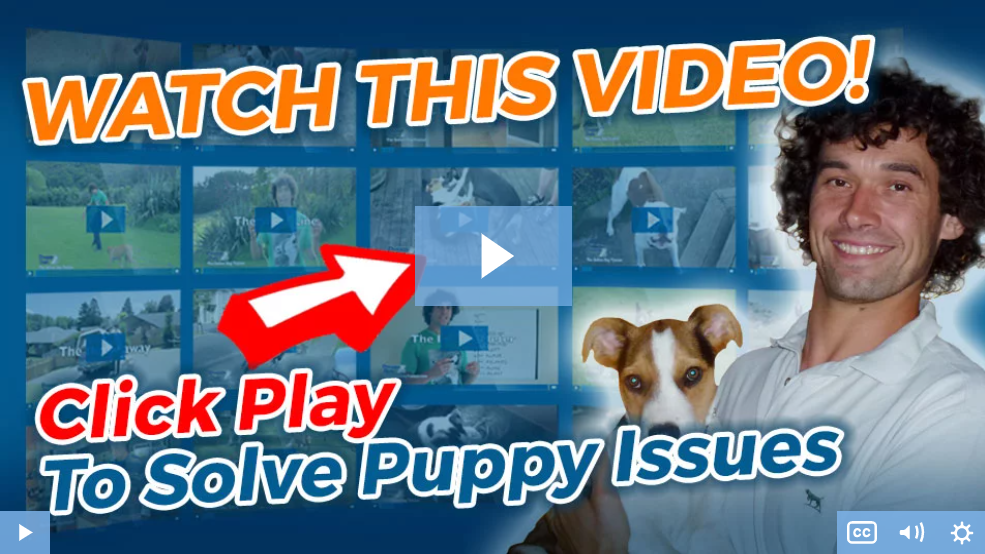If you’re wondering what age to start leash training a puppy, then firstly, congratulations on your new little addition. Secondly, congratulations on making the decision to start leash training.
All too many pet parents think that dogs somehow know how to walk on the leash innately. They don’t. It’s a skill, and it’s a skill you’ll need to train them in.
It doesn’t come without its challenges (more on which coming up), but it’s a simpler process than some people imagine.
It’s certainly a lot simpler than dealing with an adult dog that’s got no idea of what constitutes good leash manners and what doesn’t.
If you’d rather not spend the next 15 years or so pulling and tugging your dog around by their collar, it’s vital to get your pup used to the leash now.
Providing, of course, they’re old enough to start leash training in the first place. As to what count’s as old enough, stay tuned… the answer might surprise you.
Before we get to that, I’ve got a recommendation for you…
…It’s a program called The Online Dog Trainer, And it’s been put together by Dan Abdelnoor (aka Doggy Dan) to help any pup stay calm and collected regardless of what’s happening around them. (see video below)
Puppies, as you’re probably all too aware of by now, can be a little excitable.
Actually, scratch ‘a little.’ They’re a lot excitable, with a short attention span and a bouncy playfulness that’s going to do your leash training plan no good whatsoever.
The program won’t rob them of their playfulness. But it will teach them how to control their excitement and emotions for long enough to make training a pleasure rather than a chore.
If you want to get your leash training off to a flying start, check out the video link below…
(video will open in new window)
What Age To Start Leash Training A Puppy – Common Problems
Leash training isn’t a huge, insurmountable challenge. And with the right technique and plenty of patience, most dogs will adjust to the leash.
But it takes time. If you expect everything to be fine and dandy from the word go, there’s a good chance you’ll be disappointed.
While there’s nothing that can’t be overcome, teething problems are common. If you want to be ahead of the game, it pays to be aware of them upfront.
Although you might get lucky and sail through the process without a hitch, be on the lookout for…
Leash Pulling
Up until now, your pup has been used to dashing off after everything interesting they see.
Once a leash gets involved, that stops.
Suddenly, there’s pressure around their neck and something in the way of them getting where they want.
Some dogs will relent and adjust their expectations of how quickly they can get from A to B accordingly.
However, others won’t.
So rather than give in to the pressure, they’ll pull against it. If you let yourselves be dragged along, they’ll figure their tactic is working and keep right on pulling.
Leash Chewing
Some dogs like having something in their mouth all the time. If there’s nothing in there except teeth and tongue, they get out of sorts and quarrelsome.
The problem is, they’re usually just as inclined to chew on the leash as that fancy chew toy you spent a fortune on.
Some dogs start mouthing and chewing the leash from the moment it goes on to the moment it comes off.
While others prefer to just give it an occasional nibble.
Either way, they could be doing it as a stress reliever (think of the leash as a giant pacifier) or as a way of grabbing your attention.
Leash Reactivity
Leash reactivity is very common and very, very frustrating.
It happens when a dog spots something interesting (another dog, a jogger, a kid on a skateboard, etc.) and reacts by lunging, barking, and pulling at the leash.
Most of the time, the behavior stems from frustration – they’ve seen something they want to get to, but they can’t get close because of the leash.
In other cases, it can arise from fear – they’re less interested than scared and are desperate to get as far away from it as possible.
Leash Refusal
Dealing with a dog that pulls or chews a leash might be frustrating, but it’s nothing compared with dealing with a dog that throws the brakes on the moment the leash comes out.
Most of the time, it arises from unfamiliarity, something that can easily turn into fear with time.
Some dogs might find the pressure of the leash on their necks uncomfortable. While others might object to the very idea of going for a walk at all (it’s strange to think, but for some dogs, walks can be too stressful and overstimulating to be pleasurable).
Related Post: 5 Reasons Your Puppy Hates The Leash And What To Do About It!

What Age to Start Leash Training a Puppy?
The whole world and its mother have an opinion on the best age to start leash training. But most experts agree that 7-8 weeks old is the optimal age.
But before you start planning your pup’s first big walk, there’s something to be aware of.
7 – 8 weeks old is the perfect age to start leash training your pup INDOORS.
At that age, your pup won’t yet have received their full set of vaccinations. And until that happens, you need to avoid taking them anywhere they might run into unvaccinated dogs or diseased wildlife.
So for now, hold fire on that trip to the dog park.
Instead, practice wearing the leash for short periods around the house. It’ll help get them comfortable with the sensation, build up their familiarity, and keep them safe until they’re ready to take the fun outdoors.
The Best Way to Leash Train a Puppy
No puppy, no matter how smart, knows how to walk on a leash until someone teaches them.
Fortunately, there’s plenty of hints and tips available that will make the process run smoothly, both for you and your pup.
The first hint?
Check out The Online Dog Trainer from Dan Abdelnoor.
If your pup is calm, relaxed, and focused when you begin your training sessions, you’re in for a much smoother ride than if they’re running around like a rocket-fuelled football.
Learning a bit of control won’t make your pup boring, but it will make the training easier – and that, in the long run, is going to benefit your dog just as much as it does you.
Once your pup is calm and in the zone, you can get started.
Choose the Right Equipment
You don’t need to weigh your pup down in the heaviest, most hardcore piece of kit on the market to keep them safe.
Anything bulky and heavy will just be uncomfortable, so look for the lightest equipment you can find that’s suitable for your dog’s age and breed.
Make the Introductions
Before you slip your pup’s collar on for the first time, let them get familiar with it.
Hold it out for them to have a sniff, and give them a treat when they do.
Once the greetings are out of the way, slip it on and let them wear it around the house so they can get used to the feeling.
Next, introduce the leash into the equation, following the same process as before.
Let them walk around with it on, keeping the sessions short and treat fueled. Add some games to the session, so they learn to associate the leash with fun times.
Most importantly, be sure to stick around whenever they wear the leash in case it gets tangled.
Teach Them a Cue
Now your pup is used to wearing a leash, it’s time to teach them a special cue.
You can cluck your tongue, use a clicker, or just say ‘yes’… it’s up to you.
Make sure they’re calm (if they’re not, it’s time to roll out the calming exercises from the Online Dog Trainer) and in a room free of distractions.
Then go ahead and issue the cue.
As soon as your pup looks at you or approaches you, give them a treat.
Then rinse and repeat.
It may take a few tries, but your pup should eventually start coming to you each time you make the cue sound.
Once they are, you can dial things up a notch.
Pop the leash on, issue the cue, and then, when your pup is on the way over, take a couple of steps back.
Reward them once they reach you. Keep practicing until your puppy walks with you for a few paces.
For the next step, pick up the leash and walk a few steps so they can get used to the additional pressure.
As pups tire easily, be sure to keep the sessions short.
Take It Outside
Now your pup’s coming to you whenever you issue the cue, they’re ready for some outdoor action.
If you have a safe, fully enclosed yard, perfect. If not, keep practicing indoors until they’re fully vaccinated.
As the great outdoors will throw up a bunch of new challenges and distractions, keep the walks short at first.
If they get distracted or start pulling, use the cue sound to refocus their attention and walk a few paces away.
Reward them with a treat when they follow.
Over time, gradually work on increasing the walk times, remembering to keep them as fun and positive as possible with the help of some handy treats.
Related Post: How To Socialize A Puppy Before Vaccinations – The Safe & Easy Way

Be Ready for Trouble
We’ve already looked at some of the theoretical problems you might face while you’re leash training. But what do you do when the problems go from hypothetical to real?
As usual, the solution depends on the problem…
Overexcitement
Some dogs slam on the brakes the minute they see a leash.
Others have the exact opposite reaction.
If your dog can’t control their excitement when the leash comes out, put it down, walk away and wait for them to calm down before you put it on.
If their over-excitement spills into the walk (or into life in general), The Online Dog Trainer will prove a big help in bringing their emotions under control.
Pulling
If your dog starts pulling you along while you walk, apply the brakes and do your best impression of a tree.
Don’t jerk the lead, don’t move, and don’t do anything until your dog comes back to you.
Be consistent with the approach: if your dog gets it into their head that pulling works as a way to get where they want, every walk can turn into a battle.
Lunging
As soon as you spot another dog, skateboarder, or anything else your dog has a habit of lunging at, redirect their attention with some treats before they get the chance to react.
While you do that, work on increasing the distance between them and the target.
Barking
If your dog barks at other dogs or people when they’re outside, it could be a sign they’re not getting enough exercise throughout the day.
So above all else, make sure they get the appropriate level of mental and physical stimulation they need.
If that doesn’t fix the problem, apply the same strategy as you would for lunging, using treats as a distraction, and increasing the distance between them and the target before they have a chance to bark.
Over time, your pup will get so used to receiving treats whenever they see another dog, they’ll automatically turn their attention to you rather than the dog.

Wrapping Things Up
Some people dread the thought of leash training a puppy. The truth is, it’s not the complicated, stressful experience it’s sometimes made out to be.
Sure, you might come across a few bumps in the road, but providing you go into the process knowing what those bumps are and how to navigate them, they won’t derail you.
As with everything else, patience and consistency are vital. If you can keep your cool (and teach your pup how to do the same), they’ll be happily trotting by your side before you know it.

